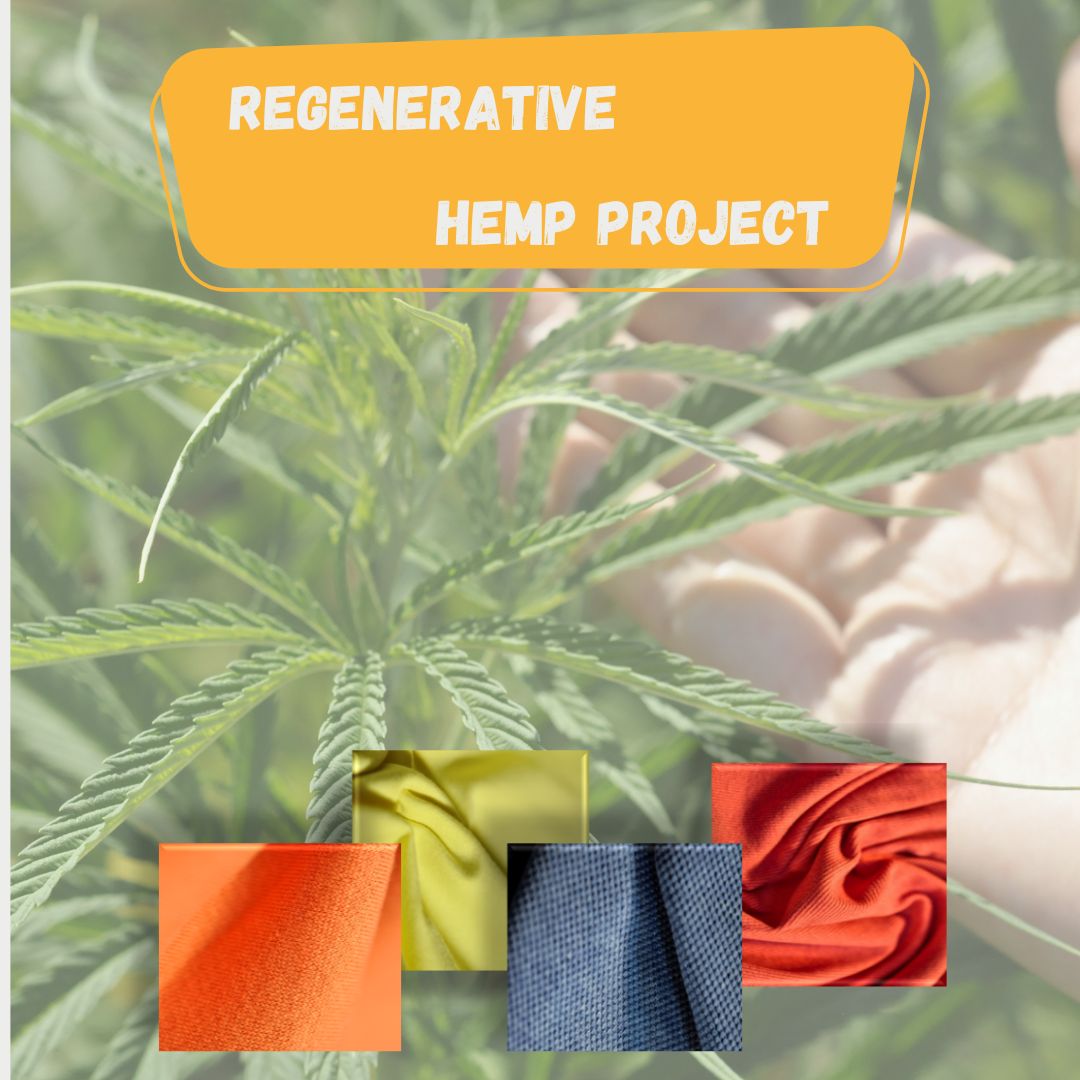With our commitment to sustainability and organic production, eliminating our CO2 footprint has been always our main goal.
Also being in the textile industry so far has led us to full awareness of textile production's adverse effects on local ecosystems.
Our latest project to get closer to our sustainability desires is our regenerative hemp farm which is within 100 kilometers of our office in Izmir, Turkey.
In the below article after the short introduction and description of industrial hemp and its sustainable features, we are going to introduce our distinctive farming practices for growing hemp and the hemp blends that we offer.
What is hemp fiber?
- The term ‘hemp’ is basically the industrial name of Cannabis Sativa L. It is one of the oldest plants grown across the world somehow in any weather condition.
- Application of hemp: textile, paper, oil, biopolymer, construction, automotive, cosmetics, food, health, and renewable energy industries.
- Hemp guarantees high yields (up to12 tons per hectare as cellulose, 20 tons as stem particles, and 25tons as fiber matter per hectare)
- Hemp is a natural bast fiber.
- Fiber-producing part of the hemp is made up of strands that run the length of the plant, surrounding the woody core of the stem, and covered by a thin, gummy varnish that creates the delicate “bark” of the plant.
What are the characteristics of hemp fiber?
- Qualities of hemp fiber are excellent strength, durability, longevity, moisture wicking, air permeability, high dyeing absorption resulting in vibrant and resistant colors, warmth retention, high-temperature resistance, insulation, and UV-blocking due to their chemical composition containing lignin and phenolic acids.
- Hemp fiber, moreover, has anti-radiation, anti-mildew, antifungal, anti-static, and antibacterial properties.
- A fabric made entirely from hemp can usually be abrasive to the skin. However, when blended, depending on the other fiber, a greater range of properties and texture can be achieved. For instance, when blended with cotton, the fabrics have a softer texture and feel.
- Hemp fabric gets softer and becomes more comfortable with each wash and wear.
- Hemp blended with Tencel, less hairiness and unevenness is achieved or blended with wool, for instance, it becomes less flammable.
How sustainable is hemp?
- Hemp grows rapidly.
- As a natural fiber, it is biodegradable if keeps its natural state.
- The need for irrigation in hemp production depends on the location, season, and climate. However, generally speaking, its cultivation needs very little water, particularly when early soil moisture is taken advantage of, and early ground cover is obtained.
- Hemp requires a limited amount of chemical inputs as it can overcome the attack of most diseases as well as pests, although not 100% immune to threats. It quickly smothers other unwanted plants around it.
- Hemp accumulates heavy metals in its tissues and pulls nuclear toxins from the soil, which makes it a viable phytoremediation crop.
- Hemp has an extensive and deep root system, it aerates the soil, replenishes it by killing and displacing other tiny crops or weeds for the crops around it, and reduces soil loss and erosion.
- Hemp is suitable for rotational farming with several crops such as soybeans, tobacco, wheat, corn, and many more.
- Hemp renders the soil fertile and stabilized for subsequent crops and so it can also serve as a cover crop.
- Hemp wastewater is minimal since all parts of this plant from its seeds to its flowers and leaves are also utilized.
- Hemp has an extensive and deep root system, it aerates the soil, replenishes it by killing and displacing other tiny crops or weeds for the crops around it, and reduces soil loss and erosion.
- Hemp is suitable for rotational farming with several crops such as soybeans, tobacco, wheat, corn, and many more.
- Hemp renders the soil fertile and stabilized for subsequent crops and so it can also serve as a cover crop.
- Hemp wastewater is minimal since all parts of this plant from its seeds to its flowers and leaves are also utilized.
What are our hemp's distinctive features?
First of all, we do not leave the hemp stalks on the ground during the winter for retting and hence we prevent fiber loss, molding, blackening and rotting.
Bypassing the retting process, we directly extract fiber with a mechanical method called decortication by using a specially designed machine of ours.
In this way, time, money, and place are saved. Additionally, no chemical treatments are used.
For the cottonization process to make fiber softer, smoother, and more elastic, we use the plant's own enzyme, with no other chemical input.
- Our hemp grows exclusively as textile raw material.
- Our hemp seeds are sown close together to achieve taller stalks that are not too thick with almost no branching. Dense planting, moreover, takes care of weeds and hemp becomes naturally pest resistant.
- Our hemp stalk is in a proper thickness as it becomes thicker than it should normally be if excessive azoth is given.
- Our hemp harvest strategy is planting timely, prior to seed formation, to prevent them to become too coarse.
- The machines used for fiber peeling, cottonization, and pre-carding is developed by ourselves.
- Feedback given for the end product is assessed and required steps are taken even at the farm level by us.
What are our hemp blends?
- We blend hemp with organic cotton, recycled polyester, Tencel ™, silk, linen, and wool in varying compositions.
- The knitted qualities we offer are single jersey, rib, interlock, and french terry, and the wovens are poplin, pique, canvas, and twill.
- We are diligent about fabric production, dyeing, and all treatment stages to the same extent. We have been partners with GOTS, OCS, GRS, OEKO-TEX, and Bluesign-certified dye houses for many years.
Click here to check our Hemp-Linen catalog.

